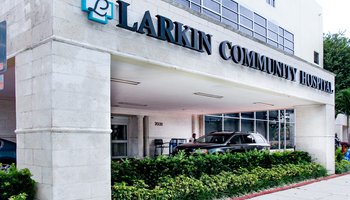
Larkin Hospital South Miami
7031 SW 62nd Ave. South Miami, 33143.
Tel: (305) 284-7500 | View
at Larkin Health Systems
Breast reconstruction is a procedure following a mastectomy or lumpectomy in which the size and shape of the breast is surgically reconstructed by a plastic surgeon. Restoring the size and shape of a women’s body to resemble its natural form can help in maintaining a confident and comfortable body image.
One technique to reconstruct the breast is the insertion of a synthetic implant that is composed of saline and/or silicone gel. Another technique is flap reconstruction which is the use of autologous tissue, which is tissue obtained from another part of your body such as your abdomen, back, buttocks, to reconstruct the breast. Reconstruction using a synthetic implant is a less complicated procedure and quicker to recover from than flap reconstruction, however, in the long-term they are likely to require reoperations and corrective procedures. The inverse is true regarding flap reconstructions which is a more complicated procedure with a longer recovery but will last a lifetime if done correctly.
Many factors influence whether reconstructive surgery should be immediate, delayed immediate, or delayed such as the type of mastectomy or lumpectomy, the stage of breast cancer, if radiation therapy is required after surgery, and the lifestyle/ preferences of the individual.
For example, if performing a skin-sparing mastectomy in which the breast tissue is removed but the nipple, areola (the circular pigmented skin surrounding the nipple), and the majority of the skin is not, the patient must have immediate or delayed immediate breast reconstruction. During immediate reconstruction, the pouch of skin that remains is used to form the new breast.
Simultaneous “Immediate” Reconstruction
Staged “Delayed Immediate” Reconstruction
Delayed Reconstruction
If a patient has a lumpectomy, in which portion(s) of the breast are removed, there will be scars or dents in the breast or other deformities following the procedure. There are far more surgical variations for lumpectomies then there are mastectomies so there are varying reconstructive options including breast implants, lipofillings (fat grafting), and flap procedures. Lipofilling also known as “fat grafting” is the use of fat, which is obtained by liposuction from another part of the body such as the abdomen, back, or buttocks, to fill and reshape the breast deformities. To do so, the fat is converted into a liquid form, injected in the contours, and thereby grafted to the breast.
Breast Reconstruction | Larkin Health Please Visit or Call The Following Facilities.
Physicians Treating Breast Reconstruction | Larkin Health.